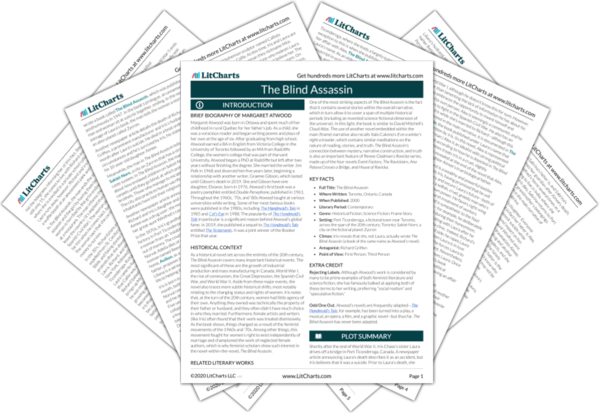The woman’s comment about the man’s “Bolshevism” is another important detail.
The Blind Assassin was published in 1947, meaning that the story of the man and the woman comes from the first half of the 20th century. The Bolshevik Revolution, a communist uprising that led to the establishment of the Soviet Union, began in 1917. The woman thus indicates that the man is a communist who’s sympathetic to the Bolsheviks’ demands for the eradication of social inequality, poverty, and oppression.
